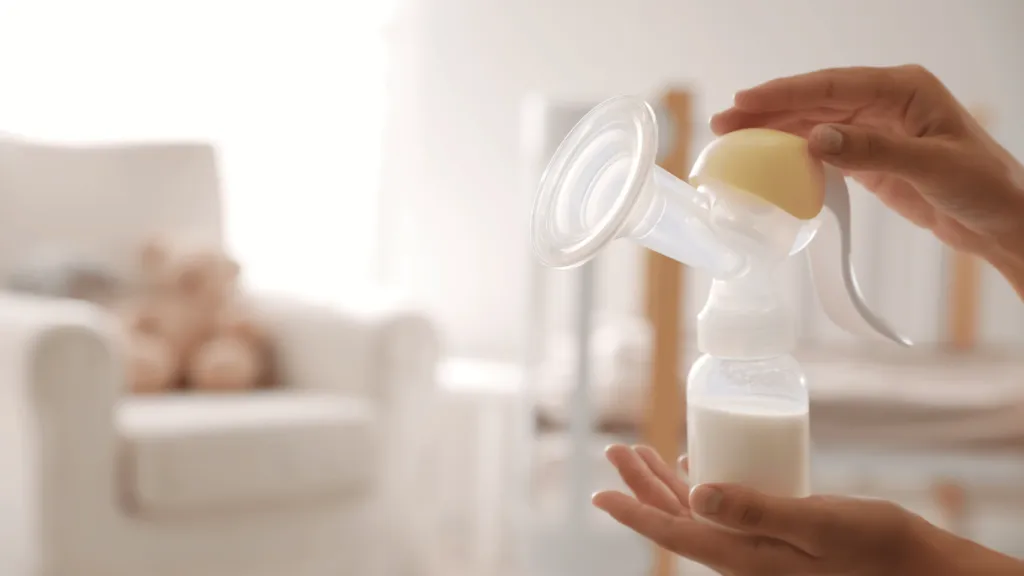The Rise of the Wearable Breast Pumps In 2025: Market Share, Trends, Challenges & Opportunities
A Comprehensive Look at Trends, Challenges, and Future Opportunities

Quick Answer: The wearable breast pump market is experiencing remarkable growth, projected to reach over $900 million by 2028 with a CAGR of 8-10%. This surge is driven by working mothers’ need for convenience, technological advancements, and the rise of remote work culture.
For decades, breast pumps have been an essential support tool for working mothers, NICU moms, and anyone navigating the complexities of lactation. But the breast pump industry has undergone a significant shift—one that’s reshaping the way women experience motherhood. At the heart of this evolution lies a booming category: wearable breast pumps.
Gone are the days of bulky machines tethered to electrical outlets. Today, mothers are opting for sleek, cordless, and quiet pumps that tuck neatly into their bras—offering privacy, portability, and freedom like never before.
In this comprehensive guide, I’ll take you through everything you need to know about the wearable breast pumps market—from growth trends and leading players to key drivers, challenges, and what the future holds for this fast-growing segment.
📈 Market Overview
Market Projection
The global wearable breast pump market is projected to reach over $900 million by 2028, growing at a CAGR of 8-10% between 2023 and 2028.
This exponential growth reflects both a fundamental shift in consumer demand and remarkable technological innovation. As someone who has personally tested dozens of breast pumps and witnessed this evolution firsthand, I can tell you that this surge represents more than just market numbers—it’s about empowering mothers with choices that fit their modern lifestyles.
🔑 Key Market Drivers
1. Changing Lifestyle of Working Mothers
The modern mother is no longer confined to traditional roles. With more women returning to work soon after childbirth, there’s an urgent need for discreet, on-the-go pumping solutions. From my conversations with hundreds of new moms, I’ve learned that wearable pumps allow mothers to multitask—whether it’s typing an email, running errands, or attending a Zoom call—without disrupting milk expression.
2. Rise of Remote Work
The pandemic reshaped the workplace dramatically. For many moms now working from home, the convenience of a hands-free pump that doesn’t interrupt their workflow is absolutely game-changing. I’ve personally seen mothers successfully pump during virtual meetings without anyone knowing!
3. Technological Advancements
Modern wearable pumps are more than just compact devices. They’re smart, offering features that would have seemed like science fiction just a few years ago:
- App connectivity for seamless tracking
- Precise milk volume monitoring
- Customizable cycle and suction control
- Advanced battery optimization
- Silent operation technology
Brands like Elvie and Willow have capitalized on this innovation with sleek, app-powered models that make pumping less clinical and more intuitive.
4. Social Media & Consumer Advocacy
Platforms like Instagram and TikTok have played a surprising yet crucial role in boosting this market. As a content creator myself, I’ve witnessed how moms sharing honest reviews, demo videos, and side-by-side comparisons have helped build trust in newer brands. The #wearablebreastpump hashtag alone has millions of views, creating a powerful community of informed consumers.
🏢 Key Players in the Market
Several companies have emerged as frontrunners in this space. Each brand has carved out a unique niche based on design philosophy, price point, suction power, and app functionality. Here’s my analysis of the leading players:
| Brand | Notable Model | Price Range | Key Features |
|---|---|---|---|
| Elvie | Elvie Pump, Elvie Stride | $250–$550 | Silent operation, comprehensive app tracking |
| Willow | Willow 3.0 | $300–$500 | Spill-proof bags, intelligent smart app |
| Momcozy | M5, S12 Pro | $100–$250 | Budget-friendly, multiple flange sizes |
| Zommee Fit | Fit, Z2 Wearable | $120–$200 | Long-lasting battery, dual motors |
| Freemie | Independence II | $200–$300 | Hospital-grade suction, closed system |
These players compete not only on innovation but also on community engagement, influencer partnerships, and customer support—areas that are increasingly important to modern mothers.
📊 Consumer Demographics & Behavior
Based on my research and direct interaction with customers, wearable pumps appeal most to:
- First-time mothers seeking convenience
- Working professionals with demanding schedules
- Tech-savvy parents who appreciate smart features
- Urban dwellers with active lifestyles
Interestingly, there’s been a significant rise in interest from stay-at-home moms as well, who want more freedom to move around the house or care for older children while pumping.
What Consumers Are Looking For:
- Comfortable fit and proper flange sizing
- Suction power comparable to hospital-grade pumps
- Minimal noise level (quieter = better)
- Easy cleaning and maintenance
- Insurance compatibility and coverage
- Overall value for money
🧩 Challenges in the Market
Despite the upward trend, the wearable breast pump market faces several growing pains that I encounter regularly in my reviews and customer interactions:
- Price Sensitivity: High-end pumps can cost over $500—a significant investment for many families. While budget-friendly options are entering the market, they often compromise on performance or build quality.
- Cleaning Complexity: Most wearable pumps have multiple parts requiring meticulous cleaning. Many users report frustration with leaks, milk residue, or hard-to-reach components.
- Insurance Reimbursement: While some pumps are FSA/HSA eligible, full insurance coverage remains limited, especially in regions with complex healthcare policies.
- Fit & Comfort Issues: Since wearable pumps rely on a snug fit against the breast, sizing inconsistencies or limited flange options can lead to discomfort or poor milk output.
🌍 Global Trends & Regional Insights
- North America remains the largest market, led by the U.S., where maternity rights and technology adoption support continued growth.
- Europe is rapidly catching up, particularly in countries like the UK, Germany, and France where women increasingly return to work earlier.
- In Asia-Pacific, especially China and South Korea, rising disposable income and growing awareness contribute to fast-paced market expansion.
- Middle East and Africa markets are still emerging but present tremendous potential as awareness campaigns gain momentum.
🚀 Future Outlook: What’s Next?
1. Integration with AI & Health Apps
Future wearable pumps will likely integrate with broader maternal health ecosystems—syncing with fertility apps, lactation trackers, and AI-powered health assistants for personalized recommendations.
2. Customization & Fit Innovation
More brands are developing adaptive suction patterns, breast mapping technology, and wider flange size inclusivity to address current fit challenges.
3. Sustainable Materials
Eco-conscious mothers are driving demand for pumps made with BPA-free, recyclable, or biodegradable materials—a trend I expect to accelerate.
4. B2B Partnerships
Hospitals, midwife clinics, and corporate HR departments are expected to establish more partnerships with wearable pump brands, providing these devices as part of comprehensive maternity packages.
💬 Final Thoughts
The wearable breast pump isn’t just a product—it’s a movement. It represents freedom, privacy, and empowerment for modern mothers navigating the delicate balance between nurturing and achieving their goals.
As this market continues to evolve, our focus must remain on improving accessibility, enhancing user comfort, and educating new moms about safe, effective, and supportive lactation practices.
The future isn’t just hands-free—it’s mother-centered, and that’s exactly what we need.
Charlotte Rose, RN, is a registered nurse, lactation educator, and mom of two who has tested over 50 different breast pumps. Through her work at BreastPumpsHub.com, she helps mothers find the perfect match for their pumping journey with honest, experience-based reviews.

